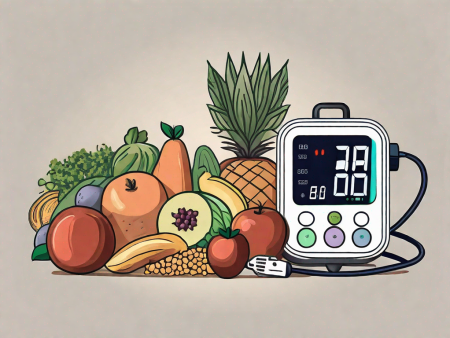Discover how facial features change over time and whether they sag or shift with age.
Do Facial Features Sag or Shift with Age?
As we journey through life, we are constantly changing and evolving. Our bodies and minds go through countless transformations, and this includes our facial features. Have you ever wondered if your once youthful and vibrant face will eventually sag or shift with age? Well, let’s dive into the fascinating world of aging and uncover the truth behind these age-old questions.
Understanding the Aging Process

There is no escaping the inevitable effects of aging. From the moment we are born, our bodies begin a slow and steady march towards maturity. However, aging is not simply a matter of counting the years that pass by. It is a complex process influenced by a myriad of biological and environmental factors.
As we delve deeper into the understanding of aging, it becomes clear that our genetic makeup plays a significant role in determining how we age. Some of us are blessed with genes that seemingly defy the passage of time, while others may find themselves battling with the effects of aging at an earlier stage in life. Factors such as cell turnover rate, collagen production, and hormone levels all contribute to the aging process.
Cell turnover rate, for instance, refers to the speed at which our cells regenerate and replace themselves. In youth, this process is efficient and rapid, resulting in a fresh and vibrant appearance. However, as we age, the rate of cell turnover slows down, leading to a dull and tired complexion. Collagen, on the other hand, is a protein that provides structural support to our skin. It gives our skin its elasticity and firmness. Unfortunately, as we age, collagen production decreases, causing our skin to lose its youthful plumpness and giving way to wrinkles and sagging.
Moreover, our hormone levels also play a crucial role in the aging process. Hormones act as messengers in our body, regulating various bodily functions. As we age, the production and balance of hormones can become disrupted, leading to a range of age-related changes. For example, a decline in estrogen levels during menopause can contribute to thinning and drying of the skin, as well as the loss of bone density.
While our genes provide a blueprint for aging, our environment also plays a vital role in how our facial features age. Daily exposure to harmful UV rays from the sun is one of the primary external factors that accelerate the aging process. The sun’s rays penetrate deep into the skin, damaging collagen and elastin fibers, which leads to the formation of wrinkles, age spots, and a leathery texture. Additionally, pollution in the air we breathe can also contribute to premature aging by causing oxidative stress and inflammation in the skin.
Furthermore, our lifestyle choices can greatly impact how we age. Smoking, for instance, is not only detrimental to our overall health but also accelerates the aging process. The chemicals in cigarettes constrict blood vessels, reducing blood flow to the skin and depriving it of essential nutrients and oxygen. This can result in a dull complexion, premature wrinkles, and a sallow appearance. Excessive alcohol consumption, too, can take a toll on our skin. Alcohol dehydrates the body, leading to dryness and dullness. It can also dilate blood vessels, causing redness and broken capillaries.
In conclusion, the aging process is a complex interplay between our genetic makeup and the environment in which we live. While we may not be able to halt the passage of time, understanding the factors that influence aging can empower us to make informed choices that promote healthy aging and maintain a youthful appearance for as long as possible.
The Science Behind Sagging Skin
Now that we have a better understanding of the aging process, let’s tackle the age-old question of sagging skin. It’s no secret that with age, our once firm and taut skin starts to lose its elasticity. But what exactly causes this gravitational battle?
As we delve deeper into the science of sagging skin, we discover that there are multiple factors at play. One of the key contributors is the gradual decline in the production of collagen and elastin – the dynamic duo responsible for maintaining the firmness and elasticity of our skin. Collagen provides structural support, while elastin allows our skin to stretch and bounce back. Unfortunately, as we age, the production of these two precious proteins slows down, leaving us with skin that is more prone to sagging.
Collagen and Elastin: The Role They Play
Collagen and elastin are not just mere buzzwords in the skincare industry – they are the building blocks of youthful and supple skin. Collagen, the most abundant protein in our bodies, acts as a scaffolding for our skin, providing it with strength and structure. Elastin, on the other hand, gives our skin its elasticity, allowing it to snap back into place after being stretched. Together, these proteins work in harmony to keep our skin looking firm and smooth.
However, as the years go by, the production of collagen and elastin gradually declines. This decline can be attributed to various factors, including genetic predisposition, lifestyle choices, and environmental factors such as sun exposure and pollution. The decrease in collagen and elastin production leads to a loss of skin elasticity and firmness, making sagging skin a common concern for many individuals.
How Gravity Impacts Facial Features
Gravity, that unrelenting force, is no friend to our facial features. As we age, gravity pulls down on our once perky parts – hello, droopy eyelids and sagging cheeks! This constant downward tug, coupled with the loss of collagen and elastin, can lead to noticeable changes in our facial structure over time.
When gravity takes its toll on our skin, it causes the underlying support structures to weaken. The once firm and lifted appearance of our facial features gradually gives way to a more relaxed and sagging look. The effects of gravity are particularly evident in areas such as the jowls, neck, and forehead, where the skin is more prone to sagging.
However, fear not! There are steps we can take to defy the pull of gravity. From non-invasive treatments that stimulate collagen production to surgical procedures that lift and tighten the skin, there are a variety of options available to address sagging skin. Additionally, adopting a comprehensive skincare routine that includes moisturizing, sun protection, and the use of products containing ingredients like retinol and peptides can also help improve skin elasticity and minimize the appearance of sagging.
In conclusion, sagging skin is a natural part of the aging process, influenced by the gradual decline in collagen and elastin production and the relentless force of gravity. Understanding the science behind sagging skin empowers us to make informed decisions about our skincare routine and explore the various treatments and solutions available to defy the effects of time.
The Shift in Facial Features Over Time
As if sagging wasn’t enough, our facial features can also experience a shift as we age. It’s like a game of musical chairs, but instead of waiting for the music to stop, our facial bones and fat distribution decide to switch things up. Let’s explore these changes in more detail, shall we?
Have you ever looked at an old photograph of yourself and noticed that your face looks slightly different? Well, you’re not imagining things! Our facial features undergo a fascinating transformation as we journey through life.
Changes in Facial Bone Structure
Did you know that our facial bones continue to grow throughout our lifetime? It’s true! As we age, our facial bones can undergo changes in shape and size, leading to a subtle shift in our features. This can result in a more prominent jawline, a broader nose, or even changes in the contours of our cheeks.
Imagine your face as a sculpture. Over time, the underlying structure of your face, made up of bones, experiences subtle alterations. These changes can be attributed to a combination of factors, including genetics, hormonal changes, and the natural aging process.
For example, as we get older, our jawbone may become more pronounced, giving us a stronger and more defined jawline. Additionally, our nasal bones may widen, resulting in a broader nose. These changes in facial bone structure contribute to the unique and individualized appearance we develop as we age.
Fat Distribution and Volume Loss
Remember those soft and plump cheeks you had in your youth? Well, say goodbye to them! As we age, the distribution of fat in our face can change, leading to a loss of volume in certain areas. This volume loss can result in sunken cheeks, hollowed under-eyes, and the appearance of jowls. It’s like playing a sneaky game of hide-and-seek with our facial fat!
When we’re young, our face is characterized by a healthy layer of subcutaneous fat, which gives our skin a smooth and youthful appearance. However, as we age, this fat distribution undergoes a shift, leading to a redistribution of volume.
One common area where fat loss occurs is in the cheeks. The once plump and rosy cheeks of our youth may gradually lose their fullness, resulting in a more sunken and hollowed appearance. Additionally, the area under our eyes may also experience volume loss, leading to the formation of dark circles and a tired appearance.
Another area where fat distribution changes are commonly observed is the jawline. As we age, the fat pads that provide structure and support to our jawline may begin to descend, resulting in the formation of jowls. These jowls can give the face a sagging or drooping appearance, adding to the overall changes in facial features.
So, as we navigate through the journey of life, our facial features undergo a series of changes. From the subtle shifts in our facial bone structure to the redistribution of fat and loss of volume, our face tells a story of our unique experiences and the passage of time.
Prevention and Treatment Options
Now that we’ve explored the aging process and the changes it brings to our facial features, let’s shift our focus to prevention and treatment. While we can’t turn back the hands of time, we can certainly take steps to minimize the impact of aging.

Non-Surgical Interventions for Aging Skin
From anti-aging creams to serums and everything in between, the beauty industry is filled with a plethora of non-surgical options to combat the effects of aging skin. These products aim to stimulate collagen production, improve skin elasticity, and reduce the appearance of fine lines and wrinkles. It’s like giving our skin a much-needed pep talk!
Surgical Procedures to Counteract Sagging and Shifting
For those seeking a more drastic solution, surgical interventions can provide the desired results. Facelifts, eyelid surgeries, and brow lifts are just a few of the procedures available to address sagging skin and facial shifting. Remember, though, these options come with risks and require careful consideration. It’s like the ultimate makeover, without the magic of reality TV!
The Psychological Impact of Aging
As we wrap up our exploration of facial features and aging, we must acknowledge the psychological impact that this journey can have on us.
Self-Perception and Aging
Our perception of ourselves plays a significant role in how we navigate the aging process. Embracing our changing features and finding beauty in the wrinkles and lines that tell our unique story can be a powerful and liberating experience. It’s like saying, “Hey, wrinkles, you’re just me wearing my story on my face!”
Societal Views on Aging and Beauty
Unfortunately, society’s perception of beauty can put tremendous pressure on individuals, particularly as they age. The perpetual search for the fountain of youth can be overwhelming, leaving some feeling as though their worth is attached to their youthful appearance. It’s time we redefine beauty and celebrate the aging process for the incredible journey it is!
So, do facial features sag or shift with age? The answer is a resounding yes. But rather than viewing these changes as a loss, let’s embrace them as a testament to the incredible lives we’ve lived. Our faces are the canvas of our stories, and each wrinkle and contour tells a chapter in our unique journey. Age gracefully, my friends, and wear the lines of laughter and wisdom with pride!







Your article helped me a lot, is there any more related content? Thanks!
Thank you for your sharing. I am worried that I lack creative ideas. It is your article that makes me full of hope. Thank you. But, I have a question, can you help me?
Your article helped me a lot, is there any more related content? Thanks!